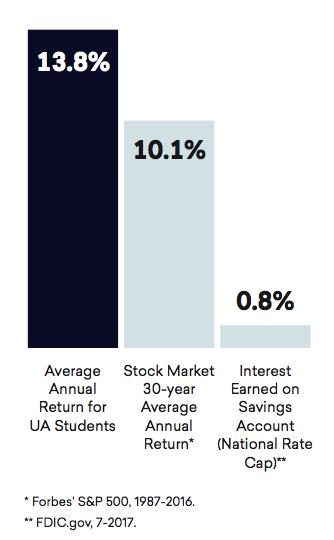


In fiscal year 2016 – 2017, UA and its research, and entrepreneurial activities, along with its students and visitors, had an overall economic impact of $2.7 billion in its primary service area which includes the counties of Summit, Cuyahoga, Stark, Medina, Portage and Wayne.
The overall economic impact represents support for more than 36,732 jobs in the service area, or one out of every 47 jobs.
The impact of former students currently employed in the regional workforce amounted to $2.2 billion in added income during the analysis year.
Almost $25 million is generated annually from visitor spending as the result of UA events and activities (athletic contests, Visit Days, concerts and recitals, art exhibits, etc.)
Nearly $350 million was added to the regional economy as a result of UA’s day-to-day operations — employee payroll and resulting spending in the region for living expenses and the purchase of University goods and services.

The lifetime return on investment (ROI) in a University of Akron education is almost five times the cost of earning a degree. That translates to increased lifetime earnings of almost $1.263 million for our graduates — a benefit-to-cost ratio of 4.8.
In return for the monies invested in the university, UA’s FY 2016-17 students will receive a present value of $1.9 billion in increased earnings over their working lives. This translates to a return of $4.80 in higher future earnings for every $1 that students invest in their education. The average annual return for students is 13.8%.
For every $1 that society spent on UA FY 2016-17 educations, society will receive a cumulative value of $19.70 in benefits, for as long as the FY 2016-17 student population at UA remains active in the state workforce.

It's a public awareness campaign launched by the Inter-University Council of Ohio (IUC), an alliance of Ohio’s 14 public universities. The mission is to promote higher education and highlight the ways colleges and universities in Ohio promote growth and opportunity in our state.
A statewide economic impact study was conducted by Economic Modeling Specialists International for the IUC.